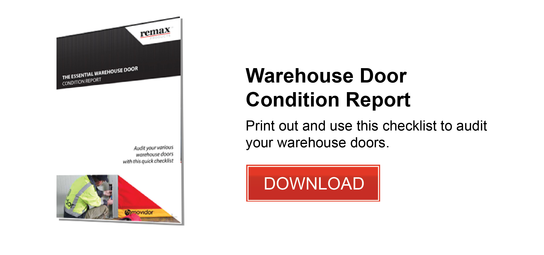Controlling costs and your carbon footprint in a cold storage facility
3 smart ways for your business to reduce energy costs
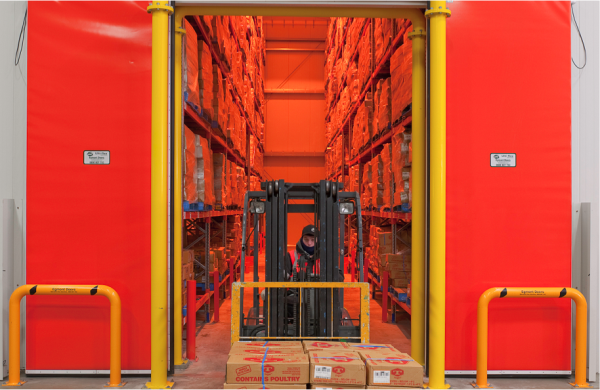
Some Australian cold storage businesses are reporting that with increasing electricity network charges, their energy costs account for up to 30% of their earnings before interest, taxes, depreciation and amortisation.
To compound this, electricity prices are expected to rise a further 5% a year. This means cutting energy consumption needs to be even more of a focus for cold storage businesses across Australia.
With this in mind the Remax Doors team have outlined 3 key tips to help you reduce your cold storage costs.
1) Use variable-frequency drives
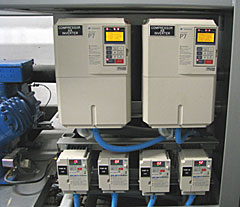
A variable-frequency drive controls AC motor speed and torque by varying the input frequency and voltage. In cold storage they can be used on compressors, evaporators and condensers.
By adding a VFD to your compressor you no longer need to rely on a slide valve to control capacity. This allows you to set the capacity of the compressor at anywhere between 0 and 100%, avoiding the energy wastage involved in using the slide valve or continuously working the compressor at maximum speed.
The same advantages of control exist for condenser and evaporator fans. While it used to be the precision of an “on” and “off” switch, you can now have an accurate measurement that matches the needs of your cold storage space.
VFDs allow you to set your fans to the optimum speed rather than the maximum speed, saving on unnecessary overwork of the fan; both in energy savings and reduced wear.
The reductions in fan speed are cubed at the cost end as a result of the affinity laws, where the power used to power a fan is proportional to the cube of the fan speed. This means that a fan operating at 50% speed will draw on a minimum of 12.5% of its power, with a little bit more for inefficiencies. This reduces cost dramatically, and these savings are further compounded by the decrease in heat emissions from the fan as it decreases in speed reducing load on the refrigeration system.
2) Reduce your lighting costs with LEDs
Lighting is a major cost saving opportunity for standard warehouse operations, but lighting for cold storage provides further challenges and chances for savings.
Lighting counts for approximately 12% of the total energy consumption of a cold storage plant. What's more, traditional sodium or metal halide lights use heat to create their light and this heat has to be removed by your refrigeration plant, further intensifying your costs.
Traditional floodlights use around 400 Watts each, an exorbitant amount when compared to the superior option of 120W to 150W LED lights. In addition to drawing less power, LED’s also address two other problems of traditional lighting methods.
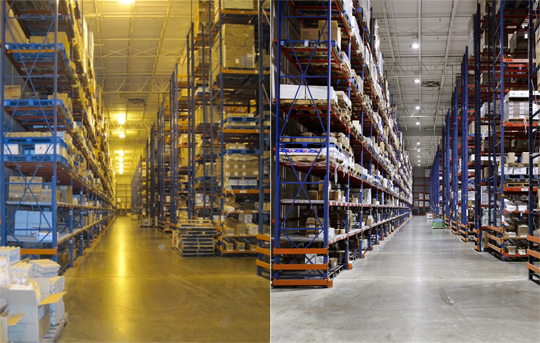
Firstly, they fulfil their primary function for your cold storage warehouse more adequately by providing a cleaner light with better illumination and less shadows in your cold storage warehouse.
Secondly, they produce a miniscule amount of heat and only around the power supply and contact point of the silicon chip. The reduced heat load on your refrigeration helps cut energy costs and drives savings up to 80% on traditional lighting options.
They also provide a further benefit of being more carbon neutral and more reliable, with failures being much less common in LED lights than traditional ones. Their longevity reduces waste from disposing of dead bulbs; coupled with the power savings and lowered waste heat, this makes them a lighting solution that's both sustainable and superior.
3) Improvements in door design
The largest heat load on a cold storage facility is through heat infiltration and leakage or loss of refrigerated air to the atmosphere. That means the first solution every warehouse should employ is reducing the number and size of doors from your facility.
By having a minimum number of possible portals to the outside, you reduce leakage and the chance of infiltration. By having smaller doors you decrease the exchange space when the door is open. It's a good idea to order custom warehouse doors to be fitted to your facility and this will ensure you get the correct size.
You should also consider the average opening time and if this can be reduced in anyway. High-speed freezer doors are a solution to this problem. They offer high insulation and quick open and close times. Having well insulated doors is crucial to not allowing heat infiltration when the door is closed. You should be considering R values of 4 and above for maximum performance. A few options manufactured here in Australia include:
| Thermal door: | Insulation value: |
| Compact Sectional Door | Insulation value EN12428, Panel U=0.76W/m2K |
| Movichill High Speed Freezer Door | R-Value: 0.6m2K/W |
| Movidor Thermic Rapid Door | 4 W/m2.K |
Also consider bi-parting doors for added speed and space saving, heated seals to stop freezing and icing on the doorway and the doors ability to flex and withstand impact.
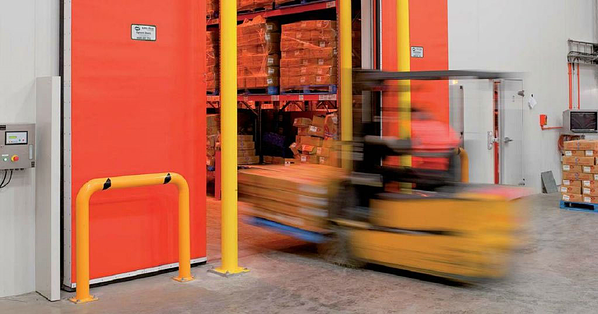
While these are your basic options for reducing heat ingress and refrigerated air loss, there are some other methods available too.
How to reduce refrigerated air loss
Ideally you should be conducting your product reception and load-outs in a refrigerated loading dock and pallets should be transported via a conveyor belt through minimum sized portholes in the chamber walls. You should also aim for pallet movements inside to be conducted by automated cranes or forklifts. At the very minimum you should be employing panels between any segregated temperature zones.
When a cold storage door is open to a refrigerated zone, the cold dense air typically rolls out the bottom and warm air rushes in the top to fill the drop in pressure. The use of desiccant systems to suck in air at the top of an open door dehumidify it and then insert it into the refrigeration system is a good move in reducing the heat load on your cold storage and the other problems associated with high humidity.
The final strategies you can employ involve the seals of your doors. You should attempt to put airlocks on all personal access routes and forklift ramps. A tight seal should be employed with any cold storage door and the key element of this involves stringent maintenance policies checking for any wear on door seals. As already mentioned heated seals for doors will prevent ice forming and rendering the door ineffective, it will also lower maintenance costs, increase safety by providing a dry floor and increase the lifespan of evaporators.
Get more info about reducing costs in your warehouse
These are just a few ways that you can reduce costs in your warehouse. If you are interested in more in depths tips for how to reduce energy costs and your carbon footprint, contact Remax Doors online or call us on 1800 010 221.






